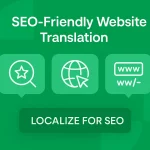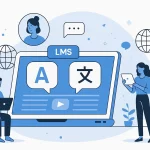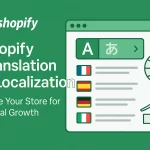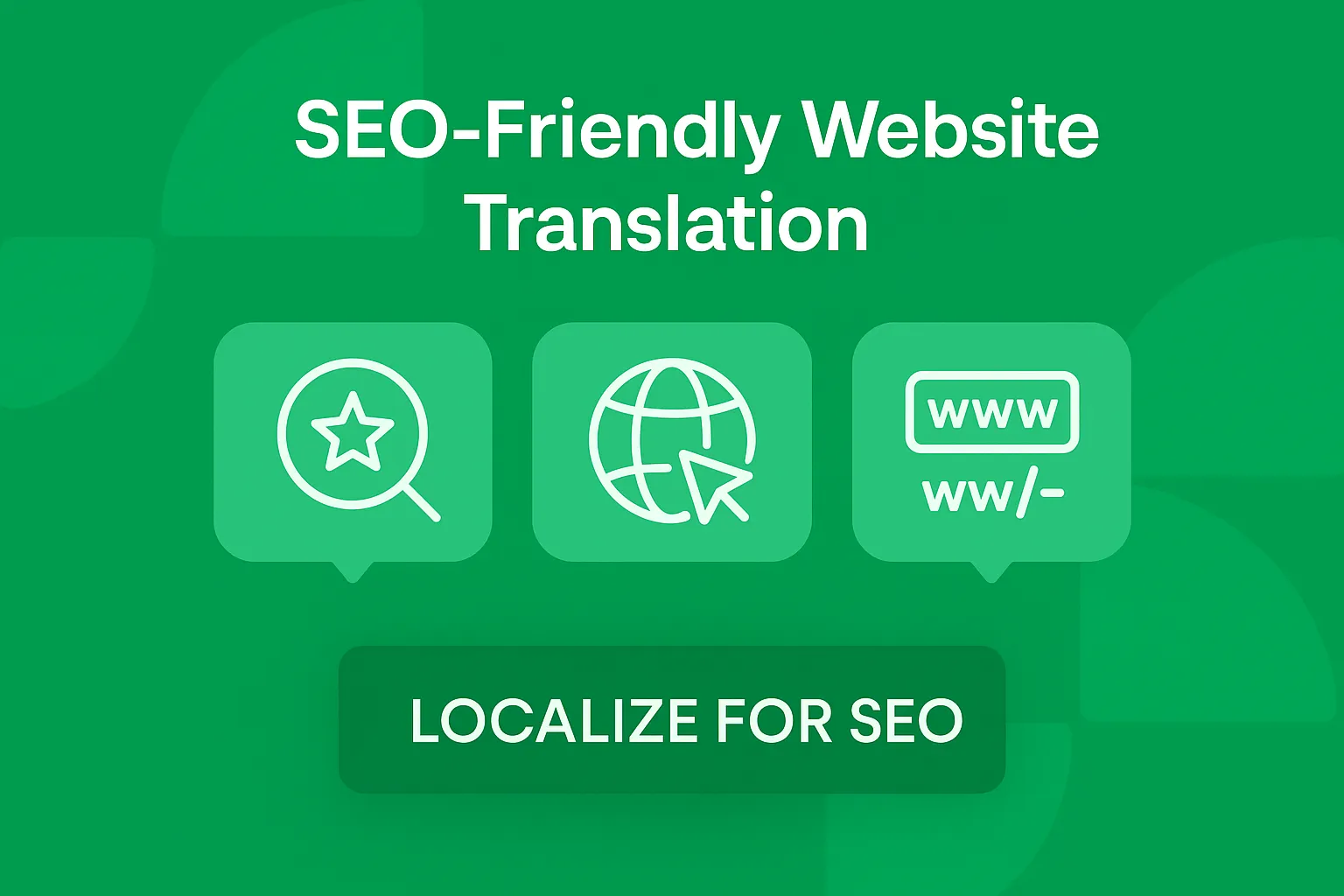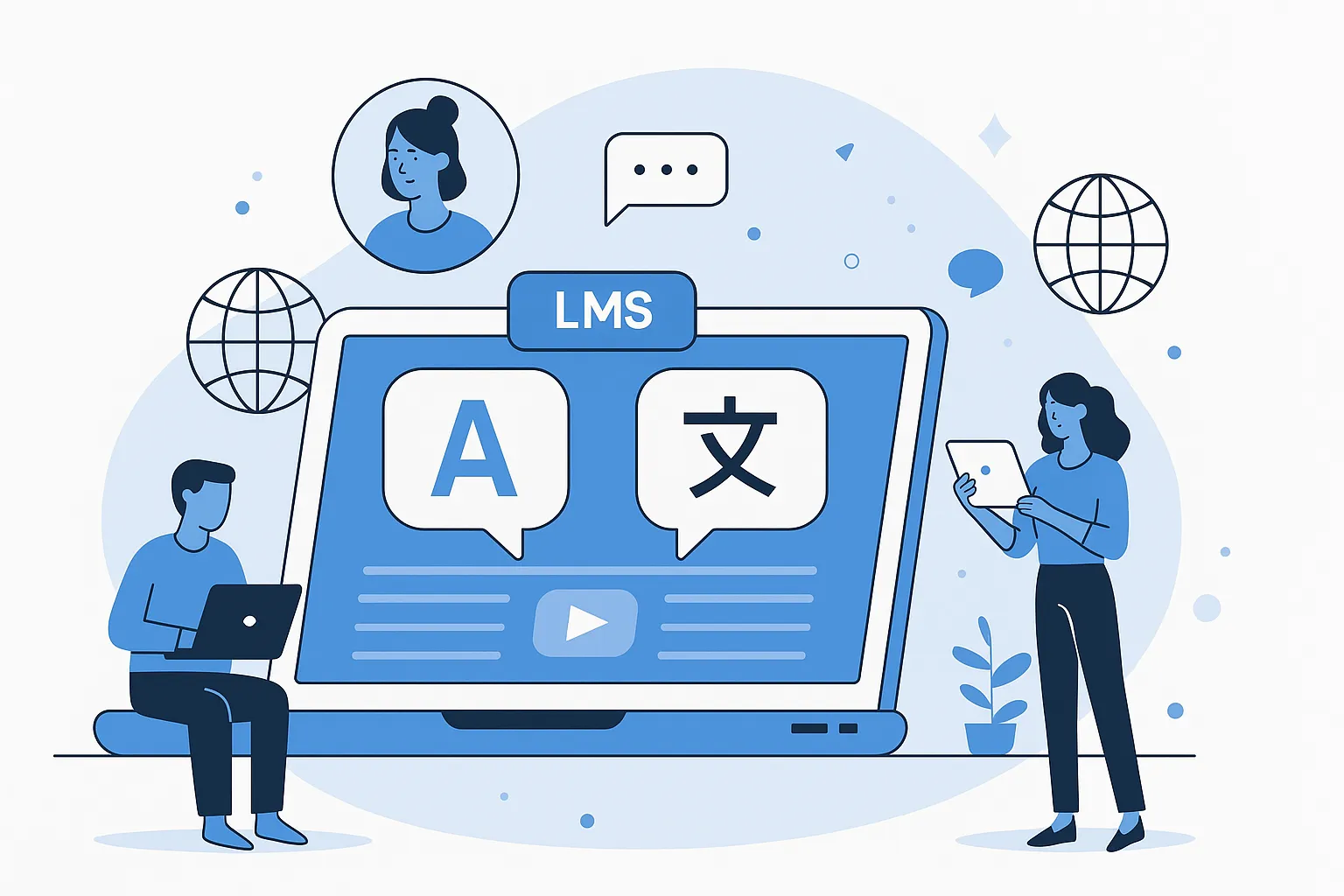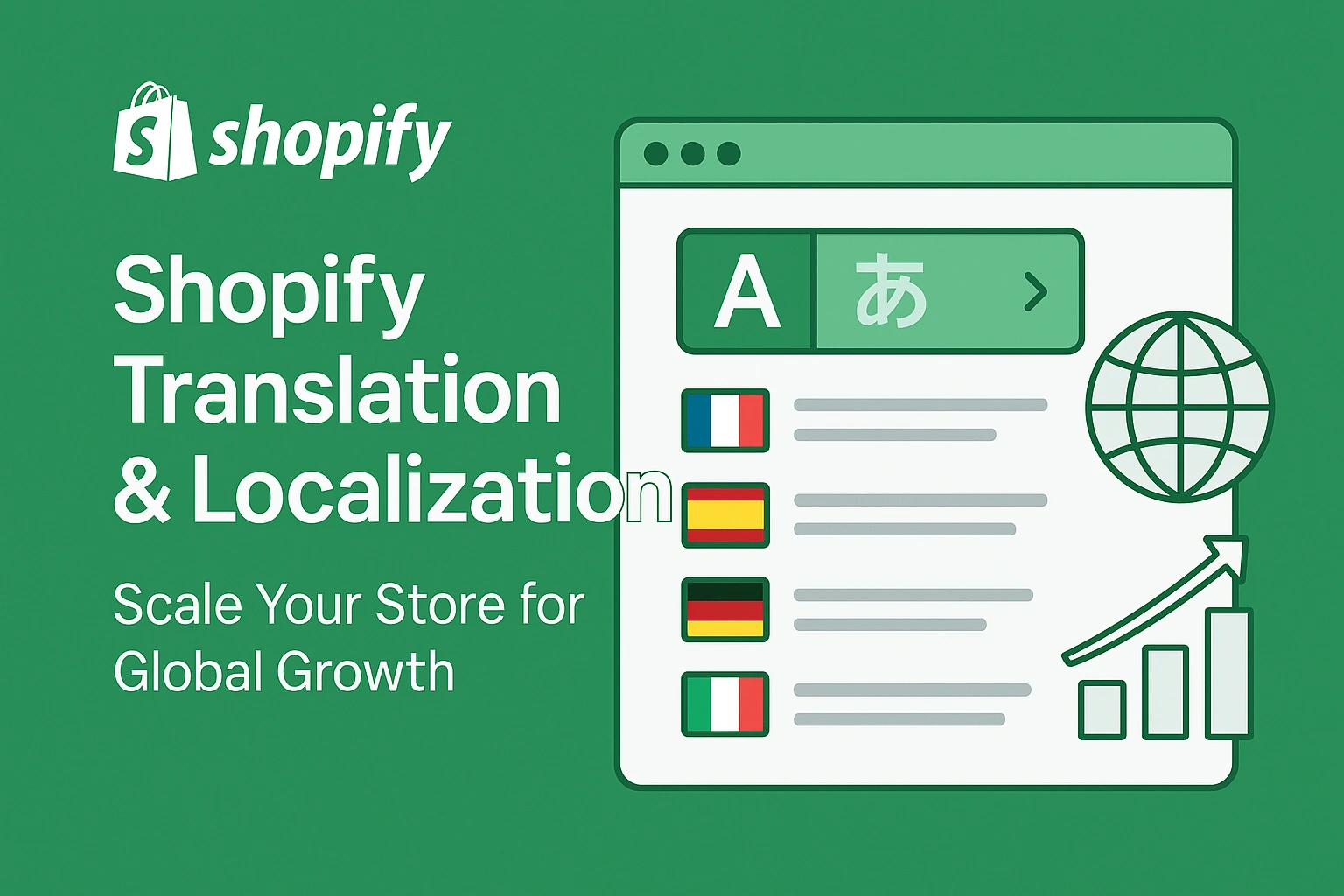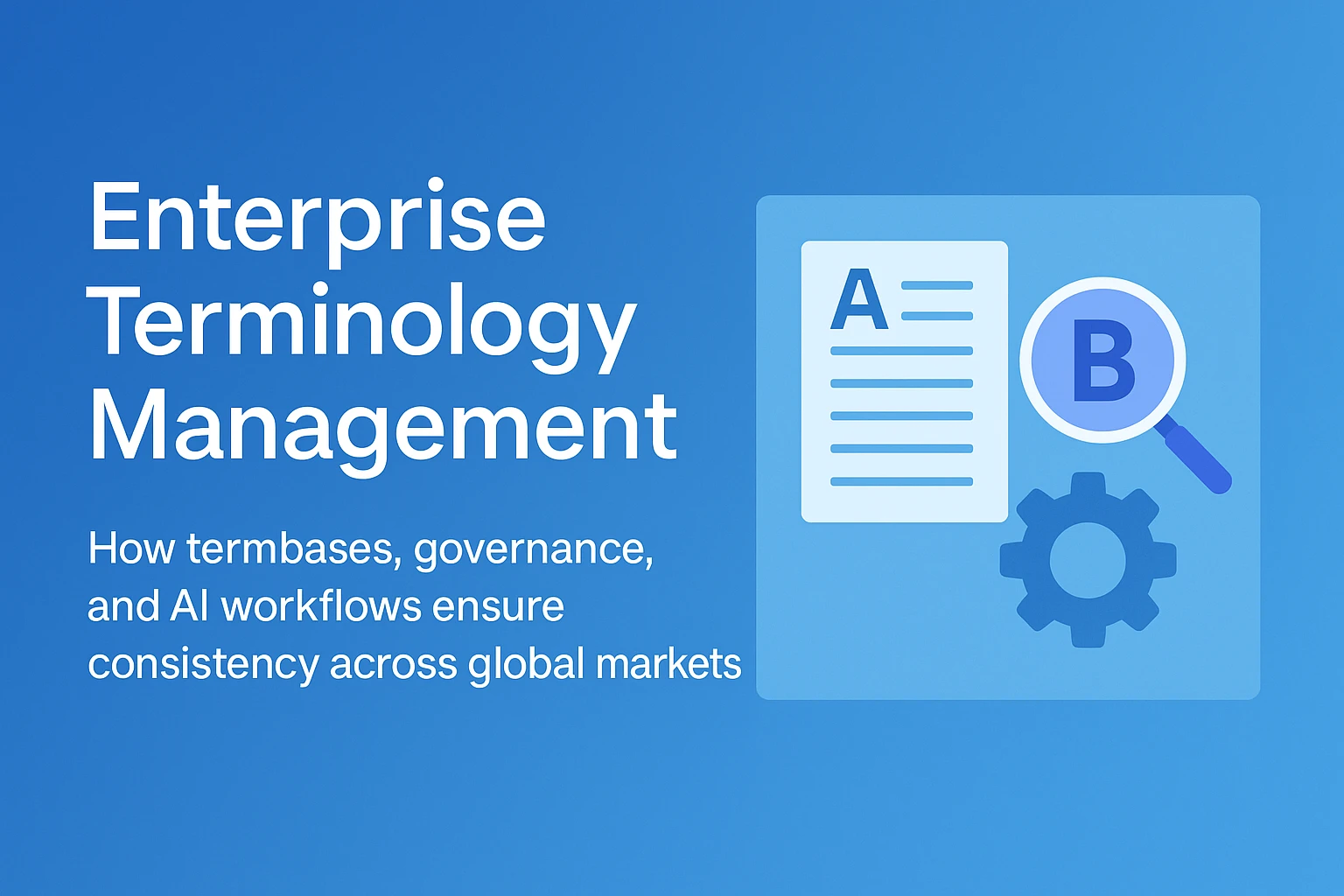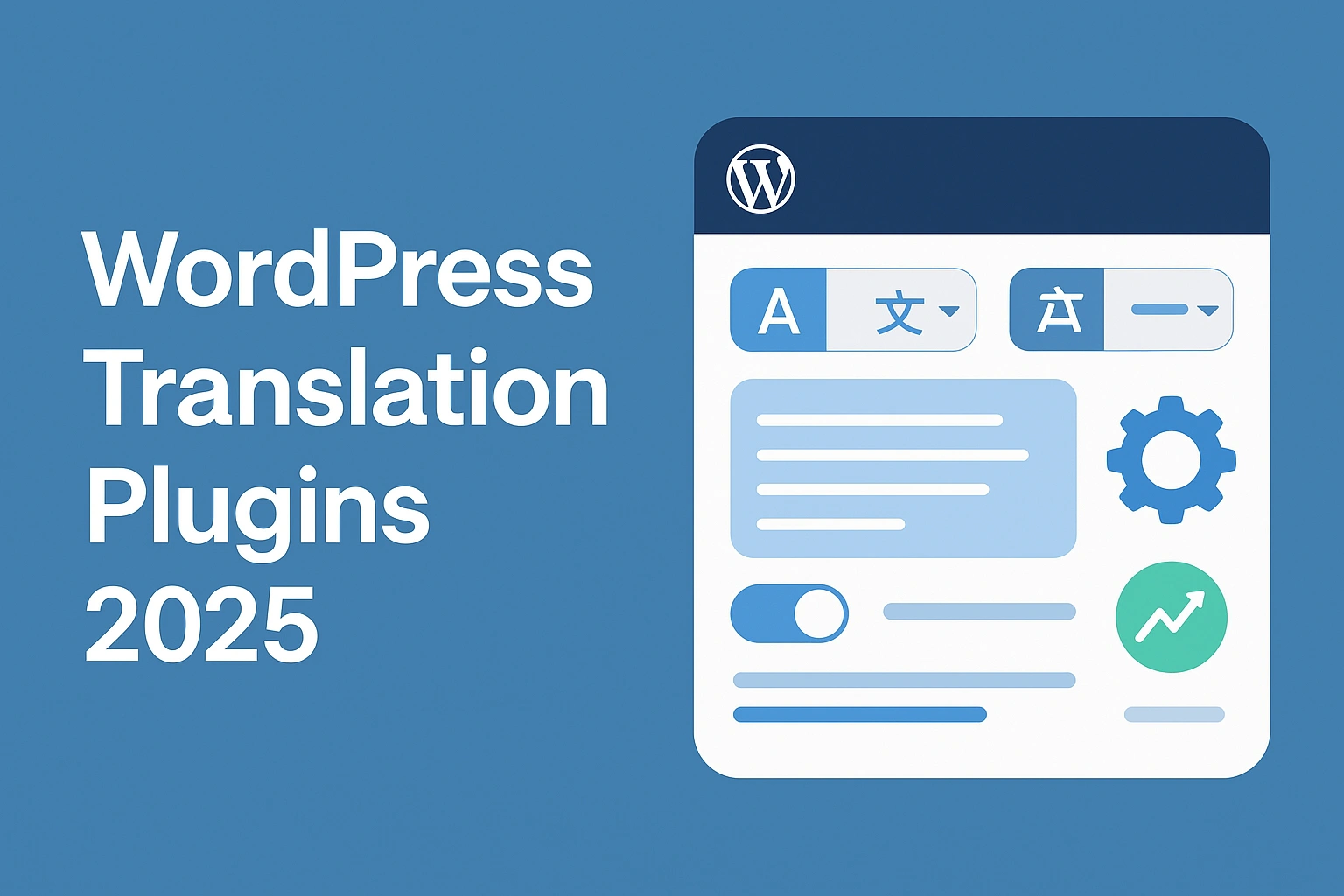Imagine this: your small business has been thriving locally. You’ve seen success, experienced growth, and you’re ready to go bigger. An upgrade from the local pond to the global ocean!
You decide it’s time to reach audiences beyond your borders— a daunting yet thrilling prospect. When you prepare for this leap, you stumble upon an intriguing term: SEO Translation. A quick internet search leaves you wondering but full of questions.
What is it? How does it work? Why do you need it?
Let’s explore these questions in greater detail.
Defining SEO and Translation
The term Search Engine Optimization (SEO) refers to all those actions you take that are aimed at making search engines (and in particular Google) “like” your content. Why? To land higher up in those search results, of course! According to Ahrefs, 68% of online experiences begin with a search engine. This means that mastering the art of SEO could be your golden ticket.
On the other hand, translation is an activity aimed at taking words from one language and weaving them into another, all while keeping the original message intact. Not an easy task at all! A report by GALA Global suggests that the global language industry reached $56.18 billion in 2021 – underscoring its immense importance.
So what happens when these two worlds collide? SEO Translation: a neat technique to make your business dominate the global audience.
SEO Translation is an approach that combines Search Engine Optimization (SEO) strategies with translation. This process ensures that your content isn’t just understandable in different languages, but it’s also optimized for search engines in those languages.
It’s about translating and tailoring your content in a way that ranks high on foreign search engines, reaching the right audience effectively. With the right combination of website content translation and SEO tactics, you can greatly increase your appeal in foreign markets. Seasoned translation agencies like Circle Translations can tailor their services to your need and offer you the right combination of translation and SEO strategies to better reach and attract foreign target audiences.
The Importance of SEO Translation
Why should businesses even bother about SEO translation? The answer couldn’t be simpler: because visibility equals success! Imagine you’re selling some spectacular ‘salsa’ online in Spain, but now you are eyeing Mexico as well. A mere website translation won’t make much difference if you desire real visibility.
Enter SEO Translation, your savior! The keywords used by your Spanish customers might differ vastly from those used by Mexican shoppers. An effective SEO translation bridges this gap seamlessly, ensuring not just more reach but targeting precisely the right audience!
Here are ten striking benefits of SEO translation.
- Global Reach: Break language barriers, and tap into new markets globally.
- Precision Targeting: Reach the right audience by using region-specific keywords.
- Improved Visibility: Effectively optimized content stands out in search results.
- Boosted Traffic: Better visibility escalates website traffic exponentially.
- Increased Sales: More traffic equates to higher sales potential.
- Brand Recognition: Enhances brand awareness on a global scale.
- Cultural Sensitivity: Resonate with local audiences, factoring in cultural nuances.
- Competitive Advantage: Stay ahead in the global market by being visible first.
- Cost-Effective Marketing: Reduced costs compared to traditional marketing strategies.
- Measurable Success: Trackable and quantifiable results for continual improvement.
According to Common Sense Advisory, 76% of consumers prefer purchasing from websites in their own languages – showing us clearly why translation alone isn’t enough anymore.
How SEO Translation Works
Now let’s peel back the layers from keyword research all the way through localization using and using our imaginary London-based cake shop venturing into Paris.
Step 1: Identify your intent
The first step is to decide on your target market. Our cake shop aims to delight Parisian taste buds. What you need here is a clear understanding of where you want your business to expand.
Step 2: Unearth relevant keywords
Next, pinpoint the relevant keywords that best represent your business in the home market. For our cake shop, words like ‘cake,’ ‘birthday cake,’ and ‘custom cakes’ are identified as key search terms. How do you choose these? Start with brainstorming sessions, use online keyword research tools, or hire an SEO expert.
Step 3: Translate those keywords
With a list of important English keywords in hand, the next step is to translate them into French – ‘gâteau,’ ‘gâteau d’anniversaire,’ and ‘gâteaux personnalisés.’ You can choose professional translators or online translation tools for this task. However, remember that accuracy matters.
Step 4: Localize — it’s more than translation
Now comes the real game-changer — localization! Here’s where you go beyond literal translations and embrace cultural preferences. The locals in France prefer ‘patisserie’ over a direct translation of ‘cake.’ This insight shows why brand localization in translation is vital in winning hearts!
So how do we achieve this?
- Understand the local culture: Research and learn about local traditions and tastes.
- Engage local expertise: Hire local language experts who can grasp cultural nuances better than automated tools.
- Test and refine: Try out different terms, track results, and refine until you hit upon the most effective terminology.
By following this approach:
- You become more than just another foreign brand.
- It showcases respect towards their ways of life.
- Your business begins to feel familiar and welcoming rather than alien.
Remember, most consumers are likely to buy from a site if it provides information in their native language. This insightful localization step is what sets winners apart from mere participants! By following this approach, our English cake shop can magically transform into a beloved patisserie in Paris!
The Role of Cultural Context in SEO Translation
Cultural nuances play an absolutely pivotal role in SEO content translation. Think about how our London-based cake shop became a local favorite patisserie for French audiences; cultural understanding can truly make or break your global aspirations.
Finding culturally apt keywords isn’t just about direct translation. Maintaining top-quality content post-translation can get tough, too—nobody enjoys clunky text!
Let’s unwrap these common hurdles.
- Culturally Suitable Keywords: Often, direct translations do not capture the essence of a word in different cultures. For example, ‘biscuits’ in the UK are ‘cookies’ in the US. It’s vital to understand this distinction.
- Quality Content Maintenance: Translating your content can sometimes result in awkward phrasings or confusing text — detrimental to user experience.
- Language Nuances: Every language has its idiosyncrasies that need to be captured accurately.
- Constant Evolution: SEO is never static; it keeps evolving with changing consumer behavior and search engine algorithms.
Now, how do we tackle these?
Engage skilled translators proficient in both languages and cultures; they’re your key to navigating around these obstacles effectively. They’ll ensure your translated content remains engaging and accurate while capturing cultural nuances impeccably.
In fact, a study by Harvard Business Review suggests language proficiency directly impacts global business success – telling us loud and clear why localizing context matters so much!
Common Challenges in SEO Translation
After having highlighted the translation importance for SEO, let’s have a look at the obstacles.
Just like any other ambitious endeavor, implementing effective SEO translations come with its own set of challenges too! One significant hurdle often faced while undertaking this process is finding culturally suitable keywords – they aren’t always just a simple direct translation away.
Maintaining high-quality content post-translation can also pose quite some challenges (After all, nobody likes reading clunky text!). However, despair is not my friend – by hiring skilled translators who have a profound understanding of both languages and cultures, these obstacles can be smoothly circumvented.
Best Practices for Effective SEO Translation
It’s time for some practical tips:
- Thoroughly research key phrases before embarking on translations.
- Always utilize native speakers—they offer invaluable insights!
- Regularly review and update your keyword list—trends change at lightning speed!
- Maintain consistency across platforms – consistency leads to recognition and trust among users.
Remember: Consistency breeds familiarity, which eventually leads to trust in Nielsen Norman Group. Meticulously following these golden nuggets will ensure successful translation and SEO that effortlessly climb up search engine ranks!
The right service provider will be able to provide the right combination of translation and SEO services based on your specific requirements. Whether you need to translate and improve the rank for technical content, lifestyle content or video and audio content, Circle Translations has got your back.
Final Thoughts
SEO translation and localization might be just what you need! If executed well, this effective strategy has the power to unlock doors leading to unlimited international opportunities. So don’t shy away from harnessing the limitless potential that lies within SEO translation.
Subtitles

Professional and Accurate Subtitle Services for your Videos.
- Video subtitles specifically tailor-made for improving accessibility.
- Using highly experienced subtitlers with years of industry experience.
- Professionally written and expertly timed.
Translation

We help the world’s top companies translate their content in over 73 languages!
- We localize content for internet websites, games, travel, cryptocurrencies, and more
- Expand your global audience by adding different languages.
- We work only with qualified translators and experienced content creators
Audio translation

Ensuring full accessibility for Blind and visual impaired audiences.
- Visual descriptive events as they occur in the video.
- Working with top audio describers to perfectly describe what is happening on-screen
- Professional sound recording.




